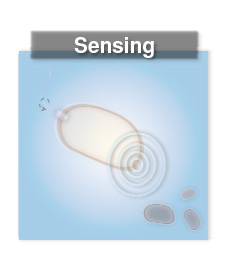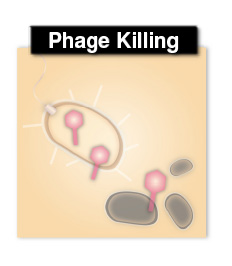Lecture and Studio Notes index | Next week >
Lecture 1: Design, Build, Test
Studio 1: Sampling of Past Projects
Lecture 2: Science as a Take-apart
Lecture 1: Design, Build, Test
Course orientation slides (PDF - 1.2MB)
Challenge: Project Runway
Instructions: Today you will design, build (i.e. fold) and launch a paper airplane. Your goal is to make a plane that flies further than anyones. Working in teams of 3, choose one person to be the designer, one to be the builder, and one to be the launcher. You can talk to each other at all stages but be sure each person does the assigned job and that someone takes notes of your work together (decisions, uncertainties, disagreements, expertise etc). Your team may use the internet if you want. The designer has one dollar to spend and your team must keep track of costs. No refunds will be issued for parts you do not use. In the event of a tie, cost and aesthetics will serve as the tie breaker. Relevant materials cost:
- paper is 30 cents a sheet
- paper clips are 10 cents each
- scotch tape is 5 cents per 1 inch strip
- pennies cost 20 cents each
- a pencil costs 10 cents
- scissors are unavailable
- a test flight before the competition costs 30 cents.
Your team has 20 minutes to design and build a plane for the competition. If you are not ready to launch at this time, you will forfeit.
|
Why are we doing this??
Comments courtesy of the students. Used with permission. |
Homework
PDP1: Letter on a Real World Problem that You Would Like to Solve
Due at next class.
Studio 1: Sampling of Past Projects
Part 1: Wednesday Matinee
Instructions: Today you will have the opportunity to watch two videos showcasing completed iGEM projects. "iGEM" stands for the "international Genetically Engineered Machines" competition. It is a summer-long opportunity for teams of students working at colleges and universities around the world to design and build genetically engineered machines, many of which use standard biological parts from the Registry of Standard Biological Parts. The videos will orient you to the kinds of accomplishments realized in a summer by teams of undergraduates and their advisers.
Our First Feature Presentation
Our first featured presentation will emphasize some of the "biology" that's often present in "synthetic biology." As a class we'll watch:
- The 2008 iGEM team from Heidelberg describing a genetically-engineered bacteria that will find, and kill pathogenic bacteria
- presentation video (MPEG4 - 100MB)
- presentation slides (
 PDF - 16.8MB)
PDF - 16.8MB)
In watching their project we can focus on
-
cell-cell communication, sensing and chemotaxis
- our ppt review of these processes (PDF)
-
phage life cycles, DNA transfer mechanisms and "parts"
- our ppt review of these processes (PDF)


Left: sensing phage; Right: lytic phage. (Courtesy of DKFZ/Univ. Heidelberg/iGEM Team Heidelberg. Used with permission.)
Note that this team developed a tremendously useful Web site that describes both their project, their human practice work and the basic background a person might need to understand the work. If your molecular biology is rusty, you can refresh your memory here.
Our Second Feature Presentation

Eau D'coli. (Courtesy of the 2006 MIT iGEM Team. Used with permission.)
Our second featured presentation will emphasize some of the "engineering" that can be accomplished in a summer by a talented group of undergrads much like yourselves. As a class we'll watch:
- The 2006 iGEM team from MIT describing a neat project for fine chemical synthesis. (These files are presented courtesy of the 2006 MIT iGEM Team: Stephen T. Payne, Reshma P. Shetty, Veena Venkatachalam, Kate Broadbent, Delbert Green II, Boyuan Zhu, Barry Canton, Austin J. Che, Jason R. Kelly, Samantha C. Sutton, Thomas F. Knight, Jr and Drew Endy.)
- Presentation video: "MIT team presentation at iGEM 2006." Google Video. Accessed December 17, 2009. http://igem.org/Videos/2006/MIT_Jamboree_Presentation.
Their project will allow us to focus on
-
programming genetic logic, growth phases of bacterial cultures, ethical questions of human experimentation
- our ppt review of these processes (PDF)
After Each Presentation
You will have 10 minutes to gather with your fellow moviegoers and discuss what you saw, using these "iGEM review questions" as a guide for your conversations:
- what was the problem this team chose to address and why?
- is this an important problem and why or why not?
- did they succeed in part or in total?
- are there aspects of the work that are unclear to you?
- if you could ask this team one question what would it be?
|
Why are we doing this?? Most of our studio session today was spent considering two projects carried out by undergraduates not unlike yourself. The iGEMers worked in teams (as you will) to figure out what they wanted to build (as you will) and then spent some time in the lab realizing their project (not possible in this class but you could join the iGEM program this summer, as three of the 20.020 students from Spring 2008 did!). Remember that these are just two projects of many and you should feel motivated by them to work this term on a project that's important to you. The projects also highlight a few of the many widgets in the toolbox for biological engineers. You might want to revisit these projects as the details of your project becomes clearer. |
Part 2: Dear John
As homework you were asked to draft a letter describing a real world problem or opportunity you have inherited that could be addressed in the near term. You should discuss these letters at your team tables and make some notes about them on the white boards. For example,
- who were they addressed to?
- how many problems/opportunities did each letter address?
- what areas were tackled?
- how many also proposed solutions to these problems?
After about an hour of discussion at your tables, you'll have a chance to hear from the other groups. Be sure to take notes on your letter about any new ideas, clarifications, or thoughts you have from the discussion. You will turn in a revised letter before tomorrow. (and note that if you've finished your discussion about the letters early you can get to work on the homework below).
Homework for Tomorrow's Challenge Session
PDP2: iGEM project review questions
Due at next class
Lecture 2: Science as a Take-apart
Challenge: Sexy on the Inside
- Watch this video in which Gever Tulley talks about learning by doing. "Gever Tulley on 5 Dangerous Things for Kids." TED.com. December 2007. Accessed October 16, 2009.
- Watch this video of a person taking apart a MacBook Air. Mascari, Christopher. "MacBook Air Tear Down: Sexy On the Inside Too." Gizmodo, January 24, 2008. Accessed October 16, 2009.
- Working in groups of 3, you will take apart a tape recorder. One person should work the tools, another should record the process (e.g. "began by taking off back panel), another should keep a parts list (e.g. "4 Phillips-screws 3 mm long from back panel") and should record the purpose of each component (e.g. "Phillips screws held back panel in place). Your team's goal is to disassemble the tape recorder into the greatest number of re-usable parts... note of the word "reusable" since next time we meet, the goal will be to reassemble your tape recorder into a working machine. As you work, you may find it helpful to describe what you think each component does and if it's made of sub-components that can be separated further without forever destroying the component's function.
- "One of the problems of taking things apart and seeing how they work—supposing you're trying to find out how a cat works--you take that cat apart to see how it works, what you've got in your hands is a non-working cat," Douglas Adams
- If there's time, watch this video showing the inner life of the cell, an understanding largely achieved by scientific "take apart" techniques. Marchant, Beth. "Cellular Visions: The Inner Life of a Cell." StudioDaily, July 20. 2006. Accessed October 16, 2009.
|
Why are we doing this?? Taking something apart is one way to understand how it works. Having disassembled a simple machine, you should consider what you've gained from the process. What did you learn? What about this challenge resembled science and what did or didn't feel like engineering? Was the tape player build to enable this sort of work? What (else) has the tape player been built for/ optimized for? What are the chances you'll be able to re-assemble this machine next week? Feedback from students:
Comments courtesy of the students. Used with permission. |
Homework
Due at next week's studio.
